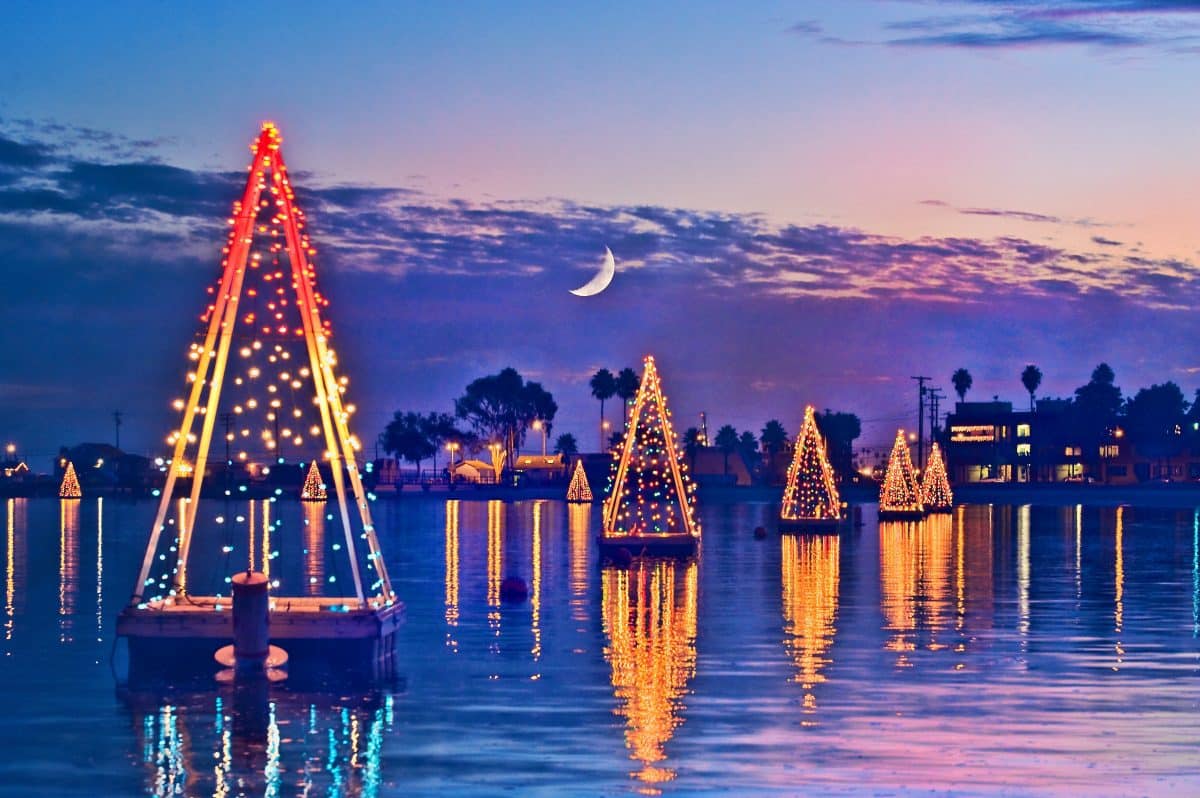Some of mankind’s greatest achievements start out small and barely noticeable. The mighty 853-passenger Airbus A380-800 jetliner, for instance, can trace its roots back to a couple of guys’ bicycle shop in Dayton, Ohio in 1892.
Another example: The annual Long Beach yuletide tradition of the Christmas Trees in the Bay goes back to an evening in 1949, when a Belmont Shore restaurateur and bon vivant named Don May, set up a Christmas tree on a raft and shoved it out into Alamitos Bay. It was one of those great ideas that comes around once in a millennium.
Don May was a man who bigod got things done. The so-called (and honorary) Mayor of Belmont Shore, May owned the popular and still-mourned Leilani Hut on Second Street, where you’ll find Legends today. So the tradition he started has held up, and lighted trees have decorated various bodies of water in Long Beach during the Christmas season ever since.
More than 60 of the 16-foot trees on 8-by-8-foot bases have sprouted up over the 69 years. Now you can spot them in the Colorado Lagoon, Heartwell, Scherer and El Dorado park lakes, Rainbow Lagoon and Harbor, and Spinnaker Bay, as well as in the initial spots of Alamitos Bay and Naples Canal—pretty much anywhere you’ll find water, you’ll find colorful trees growing in it when the Christmas season begins, which, in the case of the Trees on the Bay, is at dusk on Thanksgiving evening. The trees are lit every night through New Year’s Day.
The lighted trees almost faded to black in the 1970s when they came close to extinction because of the double-threat of energy conservation and the passage of the budget-crippling Proposition 13.
To grapple with the energy problem, the city set up an Energy Conservation Committee, which came up with the conservation plan of putting up one 50-foot Christmas tree in the water by the Second Street bridge and forgeting all the little ones. And, oh, you’ve never heard such a public outcry.
The Naples Improvement Association promised to cut back electricity use in other ways to mitigate the power needed to light up the Trees in the Bay. For one thing, they’d hold back the lighting until Dec. 15.
For another, they saddled their annual holiday house awards with the theme “An Old-fashioned Christmas,” and by that they meant, like, in the days before electricity. The association encouraged no-energy decorating, and pushed for the use of luminaries, the New Mexico tradition of putting candles in paper bags along steps, porches and walkways, and declared that “homes with lighting displays that consume large amounts of commercial power will not be considered” for an award.
As for Prop 13, the trees were trimmed from the city budget, but local associations passed the hat and they continue to help fund part of the project. Today, the city continues to pay a portion of expenses for things like installation and electricity (about $10,000 for both), along with funds from several local neighborhood associations, and business associations as well as the Long Beach Convention and Visitors Bureau and Partners of Parks.
Each year, about 10 trees need to be rebuilt and strung up with about 200 bulbs, at a cost of about $3,000 per tree.
In terms of modernization, not much has changed since May pushed out the inaugural tree in 1949. In 1953, wooden frames were introduced, and the trees proliferated slowly over the years. LED lights were given a try one year, but they weren’t bright enough, so the city went back to the old-school bulbs.
On New Year’s Day, the trees will go dark again and city workers will slowly haul them off to a storage facility at Marine Stadium.

